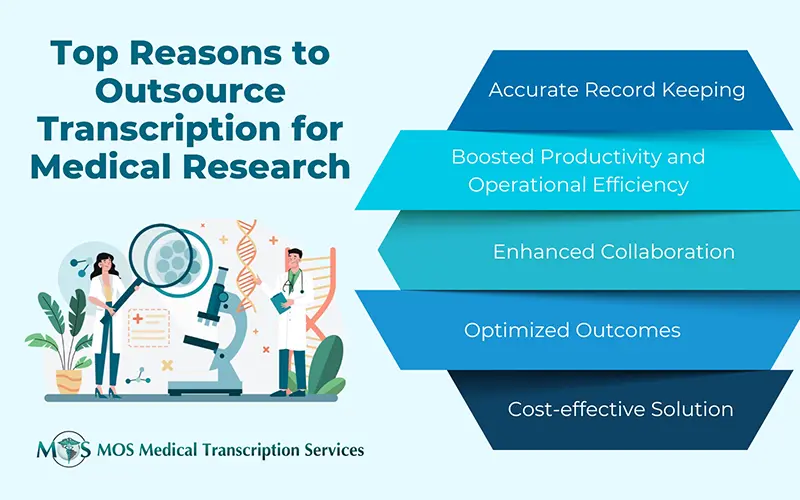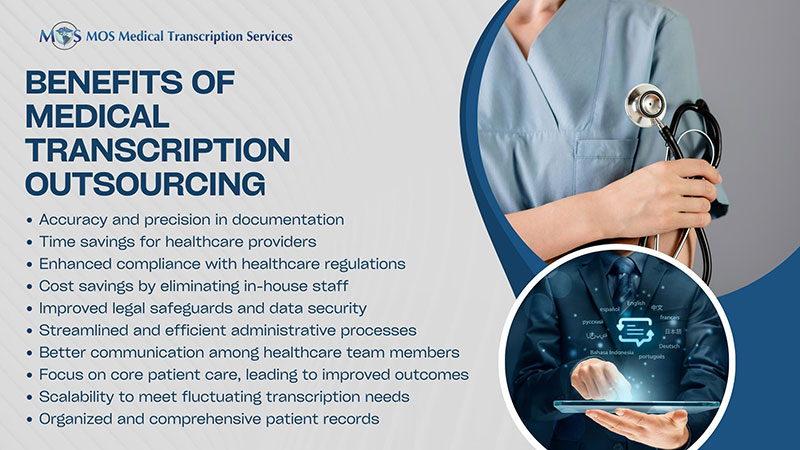General surgeons diagnose and treat surgical conditions affecting various areas of the body – the breast, lung, abdomen, thyroid, arm, legs, colon, rectal, skin, and more. Operative reports describe the indication, procedure, and any complications of the procedure and must be completed immediately after any operative procedure. Most surgeons prefer to outsource medical transcription to ensure timely documentation of dictated operative reports, which is crucial to manage the patient throughout the postoperative period. Such support can prove extremely valuable for surgeons performing overlapping surgery – scheduling procedures in more than one operating room at a time. However, a new study published in the Journal of the American Medical Association suggests that surgeons should be cautious about overlapping surgeries for high-risk patients as it may pose higher death rates and complications for this group.

The Case for Overlapping Care
In overlapping surgery, the main surgeon will move from one operating room to another performing the critical parts of one surgical procedure, while his or her team of trainee surgeons or physician assistants completes another patient’s surgery. For instance, the assisting team will close up an incision (a non-critical portion of an operation) on one patient as the senior surgeon begins surgery on another patient. Massachusetts General Hospital provides several reasons for using overlapping care:
- Useful in emergencies – when many people are injured who need immediate surgery, overlapping surgery allows them to be treated by the hospital’s most skilled surgeons and their teams.
- Cuts time waiting – Overlapping cuts the time patients may need to wait to have their non-emergency surgery as well as the time surgical teams must wait between cases.
- Improves access – Overlapping allows patients greater and more prompt access to certain surgical specialties.
- Ensures availability of important services – Overlapping enables more surgeries to be scheduled during the daytime hours when important areas such as pathology, laboratories and radiology are fully operational.
- Promotes optimal use of resources – Managing operating rooms effectively helps the surgical team care for patients more efficiently.
- Facilitates education of newer surgeons – Teams of less experienced surgeons gain significant knowledge from the attending surgeon has extensive training and experience.
Overlapping Surgery vs Concurrent Surgery
The American College of Surgeons (ACS) distinguishes between overlapping surgery and concurrent (simultaneous) surgery, and advises against concurrent surgery. According to the ACS,
- Overlapping surgery is when critical portions of cases do not coincide, that is key elements of the first operation are finished, freeing up the primary attending surgeon to start an operation in another room while others finish the first operation.
- In concurrent surgeries “the critical or key components of the procedures for which the primary attending surgeon is responsible are occurring all or in part at the same time.”
ACS guidelines state: “A primary attending surgeon’s involvement in concurrent or simultaneous surgeries on two different patients in two different rooms is not appropriate.”
Overlapping Surgery not safe for all Groups of Patients
The new study found that overlapping surgery is safe for most patients, but not for all. The researchers looked into the safety of overlapping surgery in about 66,000 patients at one of eight institutions included in the Multicenter Perioperative Outcomes Group registry. The surgeries performed included joint replacement, coronary artery bypass graft surgery, spine surgery, and craniotomy. A given surgeon’s overlapping operations for each of these types of surgeries were compared to non-overlapping operations he or she performed. The study found that:
- For most overlapping surgeries, there was no increase in deaths or overall complications (major and minor surgical complications combined) compared to surgeries that did not overlap.
- Major complications such as stroke and heart attack were slightly higher for overlapping surgeries.
- In high-risk patients (those with a high risk of dying or developing post-operative complications based on their age and pre-existing health conditions), surgical overlapping resulted in slightly higher death rates.
- In both overlapping surgeries involving coronary artery bypass grafting and those involving high-risk patients, mall errors in surgical care could have harmful effects.
“Overall, the study findings suggest that overlapping surgery is likely to be a safe practice for most patients, but the exploratory analyses do suggest potential areas for concern and further investigation”, the researchers concluded.
Need to Keep Patients informed
A 2017 U.S. study found that most people don’t know that surgeons are sometimes involved in multiple operations happening at the same time. Most of the participants felt that patients should be told before surgery exactly which components of their operation might done by a senior surgeon or by a trainee, or resident, surgeon or an assistant. The researchers said that surgeons should discuss overlapping surgery with patients beforehand and obtain their consent if this is part of their practice. ACS guidelines state:
“As part of the preoperative discussion, patients should be informed of the different types of qualified medical providers that will participate in their surgery… and their respective role explained. If an urgent or emergent situation arises that require the surgeon to leave the operating room unexpectedly, the patient should be subsequently informed.”
Regardless of whether surgeons provide overlapping surgeries or not, outsourcing medical transcription can ensure accurate and timely operative reports. An experienced medical transcription company in the USA would have professional transcriptionists who are knowledgeable about the diseases and operative techniques relating to general surgery and its subspecialties. They can provide error-free EHR-integrated surgical reports, helping providers focus on their core tasks by freeing up their time.


